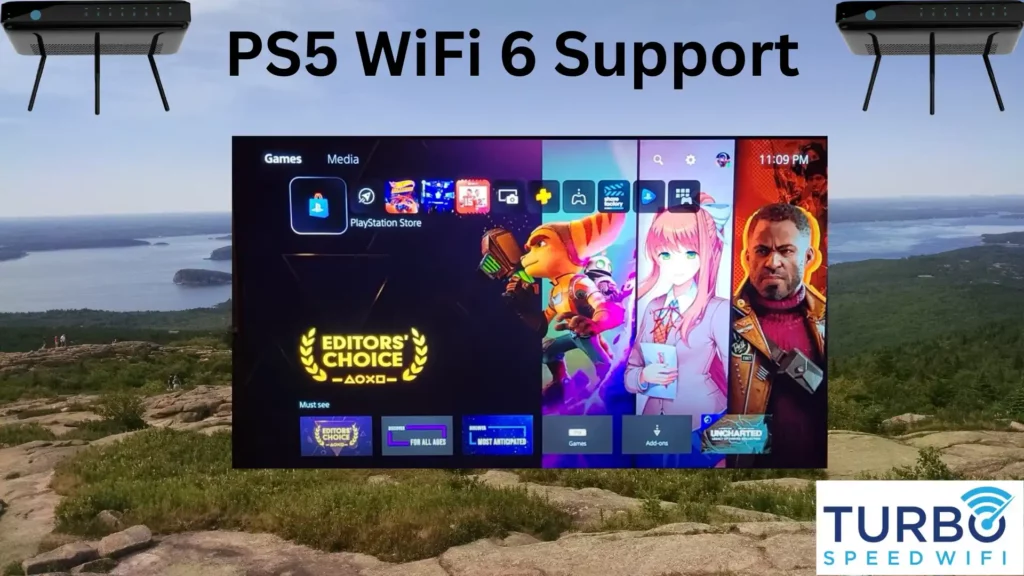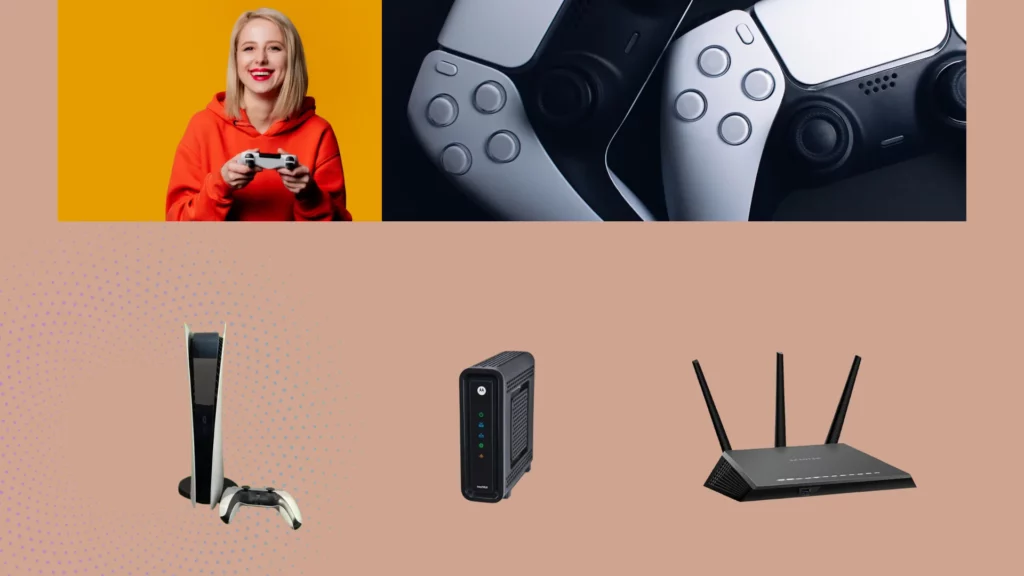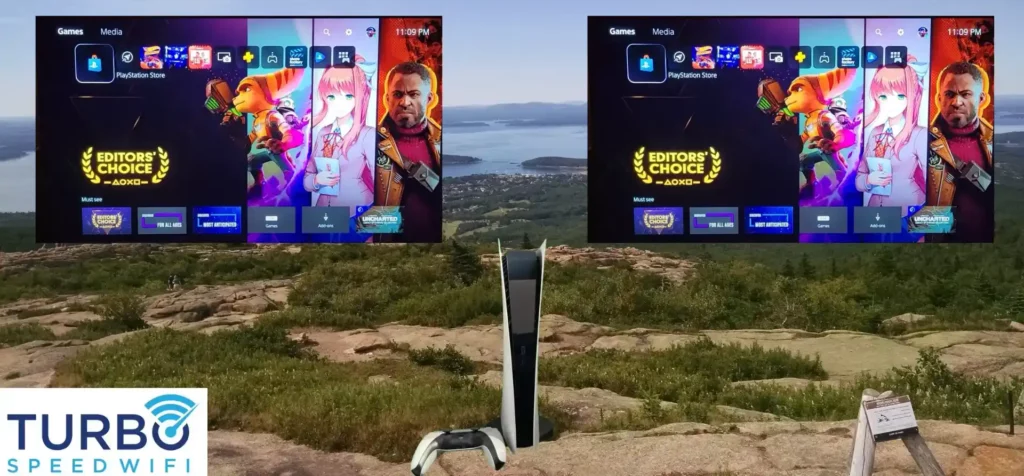The PS5 supports WiFi 6, also known as IEEE 802.11ax. This is a modern WiFi standard that was finalized in 2020. However, it is not the latest WiFi standard and does not support the 6 GHz band.
Devices that support the 6 GHz band in addition to the standard 5 GHz and 2.4 GHz bands are officially labeled as WiFi 6E devices. Unfortunately, the PS5 was designed prior to WiFi 6E being finalized, and therefore, PS5 WiFi 6E support was omitted.
PlayStation 5 WiFi 6

PS5 WiFi Specs
PS5 has a Sony J20H100 Wi-Fi 6 network card with support for 2×2 MU-MIMO and Bluetooth 5.1. It is also backward compatible all the way back to Wi-Fi 4. The PS5 supports both the 2.4 GHz and 5 GHz Wi-Fi bands. Real-world speeds in excess of 300 Mbps are possible using the Wi-Fi built into the console.
This is more than enough for most people, especially given that according to Ookla’s Speedtest.net the average broadband connection is 135 Mbps in the United States and 85 Mbps globally. Sony is only recommending a minimum of 5 Mbps for optimal results. Of course, having faster download speeds will make for faster downloads of games and updates.
Why is My PS5 so Bad on WiFi
There are a number of reasons that you may not be getting optimal WiFi performance out of your PS5. These are the top 5 culprits to poor WiFi performance on PS5.
- Your router is located too far away from your PlayStation 5 console.
- You are using the 2.4 GHz WiFi band rather than the 5 GHz WiFi band.
- Another device on your network is using all of your bandwidth.
- Your router is too old and doesn’t support WiFi 6.
- You live in a crowded RF environment with lots of wireless signal interference.
It is also important to keep in mind that your PS5 WiFi may be performing just fine, and the issue may just be your expectations vs. reality. WiFi is not really ideal for gaming. It never was and likely never will be. If you want the best performance out of your PS5, you will need to use ethernet to connect to your network.

Is WiFi 6 Faster than Ethernet
WiFi 6 does not offer speeds faster than ethernet. Despite the theoretical limit for WiFi 6 being faster than the theoretical limit of gigabit ethernet, in practice, ethernet is faster. This is also ignoring the fact that ethernet is also available in 2.5 Gbps and 10 Gbps speeds which blow WiFi 6 out of the water.
Another important difference is in the latency and stability of the connection. A wired ethernet connection will generally offer much better connection stability. This means less lag and less packet loss. For gaming, this is actually much more important than raw download speed numbers.
To see just how important using ethernet is to performance, I tested my PS5 using a wired ethernet connection side by side with using WiFi. The results of my WiFi Ethernet Test were pretty conclusive. On PS5, you need to use ethernet if you want to get the best gaming performance.
What is Wi-Fi 6
Wi-Fi 6 is the latest generation of Wi-Fi technology. It was originally named 802.11AX but was renamed when the Wi-Fi Alliance changed the naming scheme used to reference each generation of Wi-Fi technology. The new naming scheme is meant to be easier to understand as it follows a sequential pattern, with each new release getting a higher number.
The primary focus of Wi-Fi 6 is providing faster Wi-Fi in high-density environments. Examples of high-density environments include sports stadiums, university auditoriums, casinos, event centers, and theaters. In these types of environments, Wi-Fi 6 is better optimized to provide stable performance than previous Wi-Fi generations.
There are still a few key benefits to Wi-Fi 6 that apply to a home environment, particularly in dense urban neighborhoods. The increased efficiency of Wi-Fi 6 allows for higher bandwidth. PS5 WiFi 6 performance is a marginal improvement over WiFi 5 performance.

Does WiFi 6 Help PS5 Performance
WiFi 6 is an improvement over WiFi 5. The PS5 sees some improvement in speeds due to WiFi 6 compatibility. Of course, a WiFi 6 router is required to take advantage of faster speeds. The other important thing to note is that using an ethernet connection is highly recommended over using WiFi for gaming on PS5.
In the interest of science, I did an experiment to determine what affects upload speeds the most on PS5. Generally, everyone is so focused on download speeds that they forget that gaming uses bi-directional communication.
Conclusion: PS5 WiFi 6 Support
The PS5 has support for WiFi 6 but not for WiFi 6A. This means that it can’t take advantage of the newer 6 GHz WiFi band. WiFi 6 improves connection performance a fair amount when compared to older WiFi standards. However, using ethernet is still highly recommended for gaming on PS5.
